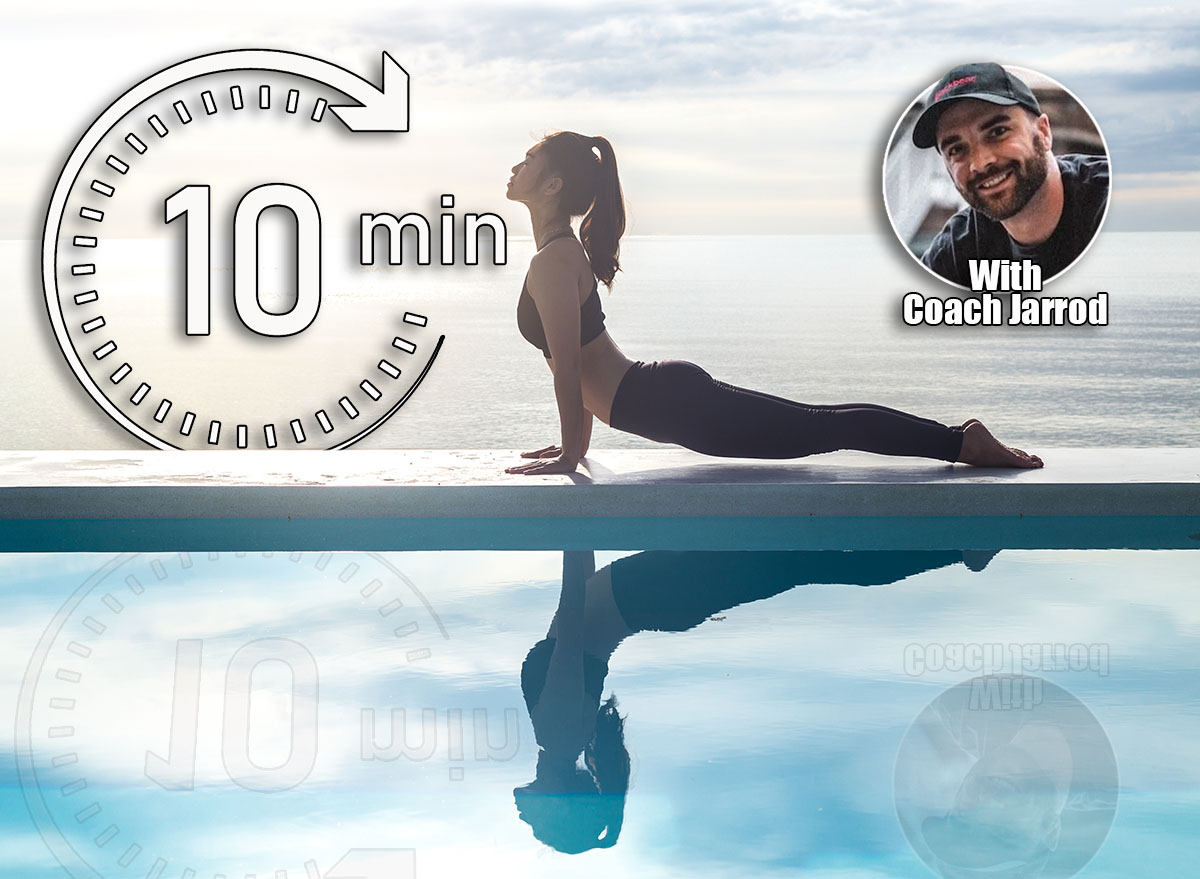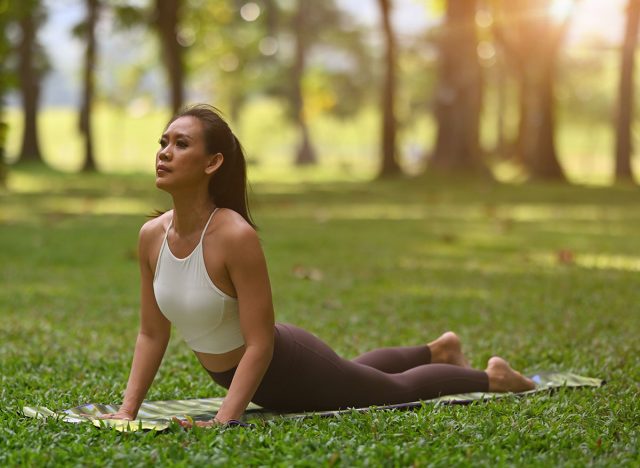The 10-Minute Core Routine That Makes You Feel Decades Younger After 50

Your core is the engine that drives how you move, stabilize, and carry yourself through life. Once you reach 50, maintaining a strong midsection pays off in every direction. A resilient core makes walking feel easier, improves posture, and helps you move with the kind of energy you thought was reserved for younger decades.
Most people stick to crunches or sit-ups, but those exercises barely scratch the surface. They work the top layer of your abs while ignoring the deeper stabilizers that keep your spine safe and your body balanced. That’s where a better, more thoughtful routine comes in. When you target the whole core, front, sides, and back, you unlock strength that shows up in everything you do.
This 10-minute sequence does more than tighten your stomach. It blends strength, mobility, and control into one efficient workout. You’ll not only fire up your deep core muscles, but you’ll also move your body through ranges of motion that leave you feeling looser, taller, and more mobile.
The routine includes three carefully chosen moves: the Rotating T Plank, the Side Plank with Thread the Needle, and a flowing Down Dog to Cobra. Together, they challenge your abs, protect your back, and build mobility through your hips, shoulders, and spine. By the end, your core will feel stronger, your posture will be more upright, and your body will look years younger.
10-Minute Core Routine After 50 to Feel Younger
Move #1: Rotating T Plank
This move trains your core the way it was designed to work, stabilizing while you rotate. It strengthens the abs, obliques, and shoulders while improving balance and coordination. The rotational element adds athleticism that carries over into daily movements.
Muscles Trained: Obliques, rectus abdominis, transverse abdominis, shoulders.
How to Do It:
- Begin in a high plank with your hands under your shoulders and feet hip-width apart.
- Rotate your body to the right, lifting your right arm toward the ceiling into a side plank.
- Hold for a second, then return to the plank.
- Rotate to the left, lifting your left arm toward the ceiling.
- Continue alternating sides for the set.
Recommended Sets and Reps: Perform 2 to 3 sets of 8 to 10 reps per side. Rest for 30 seconds between sets.
Best Variations: Elevated Rotating Plank (hands on a bench), Weighted Rotating Plank (hold a light dumbbell).
Form Tip: Keep your hips level as you rotate to avoid sagging through your lower back.
Move #2: Side Plank with Thread the Needle
The side plank develops pivotal lateral core strength, which is often overlooked in standard abdominal routines. Adding the thread-the-needle twist makes it more dynamic, improving rotation and shoulder stability while forcing your core to resist collapse.
Muscles Trained: Obliques, rectus abdominis, transverse abdominis, lats, shoulders
How to Do It:
- Start in a side plank position with your right forearm on the ground and your feet stacked.
- Extend your left arm straight toward the ceiling.
- Sweep your left arm under your torso, reaching as far as you can.
- Return your arm to the ceiling.
- Complete all reps, then switch sides.
Recommended Sets and Reps: Perform 2 sets of 8 to 12 reps per side. Rest for 30 to 45 seconds between sets.
Best Variations: Side Plank Hold, Side Plank with Hip Dips.
Form Tip: Keep your hips lifted high the entire time to avoid sinking into your shoulder.
Move #3: Down Dog to Cobra
This flowing combination doubles as a core-strengthening and mobility move. Transitioning between positions strengthens your abs, stretches your spine, and opens up tight hips and shoulders. It’s an ideal finisher to leave your body feeling supple and strong.
Muscles Trained: Abdominals, spinal stabilizers, lats, shoulders, hips
How to Do It:
- Start in a plank position with your hands under your shoulders.
- Push your hips up and back into Down Dog, driving your heels toward the ground.
- Slowly lower your chest forward and down, gliding into Cobra with your hips hovering just off the floor.
- Press your hands together to lift your chest high, feeling the stretch in your abs and spine.
- Reverse the movement back into Down Dog and repeat.
Recommended Sets and Reps: Perform 2 sets of 6 to 8 slow, controlled reps. Rest for 30 seconds between sets.
Best Variations: Down Dog Hold, Cobra Hold.
Form Tip: Move fluidly and breathe deeply with each transition, letting your breath guide the flow.
How to Improve Your Core Strength After 50

Strengthening your core after 50 is more than piling on endless ab exercises. Combining the correct movements, innovative progressions, and daily habits that keep your midsection working optimally is the right move. Think of your core as the foundation for everything else you do. When you improve it, every activity in life feels easier and safer.
Here are some of the best ways to keep building a strong, youthful core:
- Train all planes of motion: Go beyond crunches and planks. Use rotations, side planks, and anti-rotation moves to challenge your abs in every direction.
- Prioritize consistency over volume: Ten focused minutes a few times a week is more effective than one marathon session. Small doses add up quickly.
- Pair strength with mobility: Movements like Down Dog to Cobra unlock flexibility in your hips, shoulders, and spine while strengthening your abs.
- Engage your core in daily life: Practice bracing your abs while lifting, carrying, or even standing in line. These small moments reinforce stability.
- Progress slowly: Add reps, increase your hold times, or use light resistance once the basics feel solid. The goal is controlled improvement, not rushing.
By focusing on these strategies, you’ll create a core that supports better movement, protects your back, and helps you feel younger every time you get up, reach, or twist.